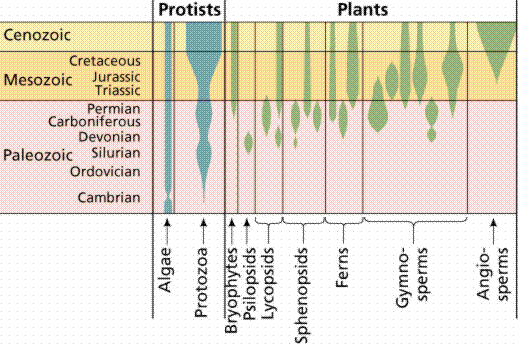
 |
Freethought & Rationalism ArchiveThe archives are read only. |
|
|
#1 |
|
Regular Member
Join Date: Dec 2002
Location: Arizona
Posts: 403
|
Do we have more species now and will there be more, or are species dissappering faster that they are being replenished.
Not sure how to phrase my question right, so feel free to refraise it. Is the evolutionary progression like a pyramid and when life started is like being at the base of the pyramid, many different species/life forms and now we are head up the pyramid and the amount of species of life is deminishing? Or is the converse true and species/life forms are increasing in number. Are the processes of evolution able to sustain life inevitablly? |
|
|
|
|
#2 |
|
Regular Member
Join Date: Dec 2002
Location: Arizona
Posts: 403
|
Okay, I just saw my questions being addressed in thread, so if this isn't answered, I won't feel too bad.
|
|
|
|
|
#3 |
|
Contributor
Join Date: Feb 2002
Location: With 10,000 lakes who needs a coast?
Posts: 10,762
|
Evolution probably started with just one species, and the number of species grew from there. So at first it would look like and upside down pyramid but since then the number of species has been going up and down as mass extinctions follow explosions of new species.
|
|
|
|
|
#4 |
|
Veteran Member
Join Date: Jul 2001
Location: Seattle
Posts: 4,261
|
Not sure if this answers your question, but here's a figure from the <a href="http://www.emc.maricopa.edu/faculty/farabee/BIOBK/BioBookEVOLII.html" target="_blank">on-line biology book.</a>
 The fossil records of some protist and plant groups. The width of the shaded space is an indicator of the number of species. Image from Purves et al., Life: The Science of Biology, 4th Edition, by Sinauer Associates (www.sinauer.com) and WH Freeman (www.whfreeman.com), used with permission. scigirl |
|
|
|
|
#5 |
|
Veteran Member
Join Date: Jul 2001
Location: Seattle
Posts: 4,261
|
Oh and here's the animal data:
 First appearances and relative diversity (width of shaded area) for major groups of animals. Image from Purves et al., Life: The Science of Biology, 4th Edition, by Sinauer Associates (www.sinauer.com) and WH Freeman (www.whfreeman.com), used with permission. So, they are sort of inverted pyramids, but with pinches in them (where mass extinctions occured). scigirl |
|
|
|
|
#6 |
|
Veteran Member
Join Date: Jun 2001
Location: secularcafe.org
Posts: 9,525
|
I've got to say that those charts don't make sense to me.
For instance, look at the Mesozoic/Cenozoic boundary (the K/T extinction.) The only 'pinching' I can see is among the gymnosperms (plants) and brachiopods (animals). Now I don't recall the exact percentage of chordates which were wiped out by the K/T impact, but I do know it was a large percentage of all land animals. Yet the chordates show no reduction in species numbers at all in that chart. Is it that the number of species exploded so fast after the K/T impact, that the 'pinch' is so tiny as not to show at that scale- so that after less than a million years, the number of species was essentially equal to the number before the impact? Just how old is the data used for that chart? If the charts are accurate, it would seem that life diversifies so rapidly that even mass extinctions hardly slow the proliferating numbers of species. |
|
|
|
|
#7 | |
|
Veteran Member
Join Date: Aug 2001
Location: Morris, MN
Posts: 3,341
|
Quote:
|
|
|
|
|
|
#8 |
|
Veteran Member
Join Date: Jul 2001
Location: Seattle
Posts: 4,261
|
Ok don't ask me - I just posted the links!
scigirl |
|
|
|
|
#9 |
|
Veteran Member
Join Date: Aug 2002
Location: alaska
Posts: 2,737
|
The best thing to do is read Gould.
A bush is the best metaphor for evolution. |
|
|
| Thread Tools | Search this Thread |
|